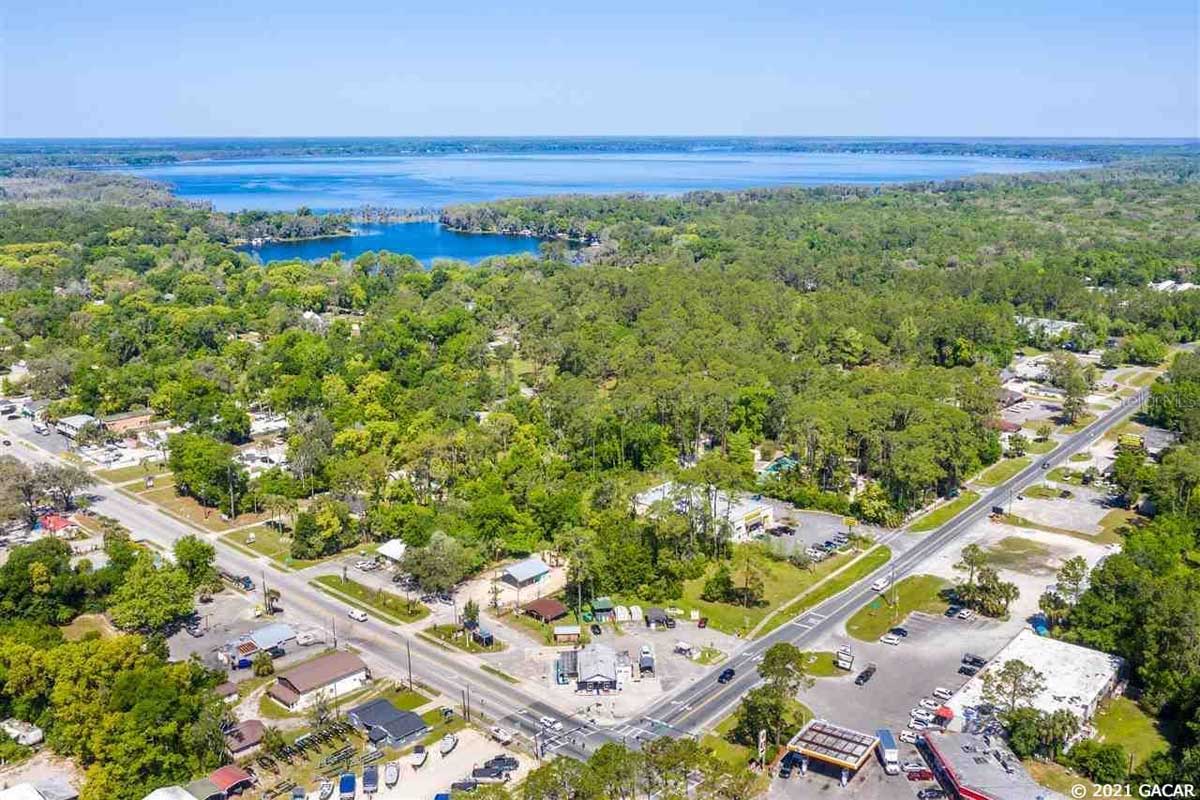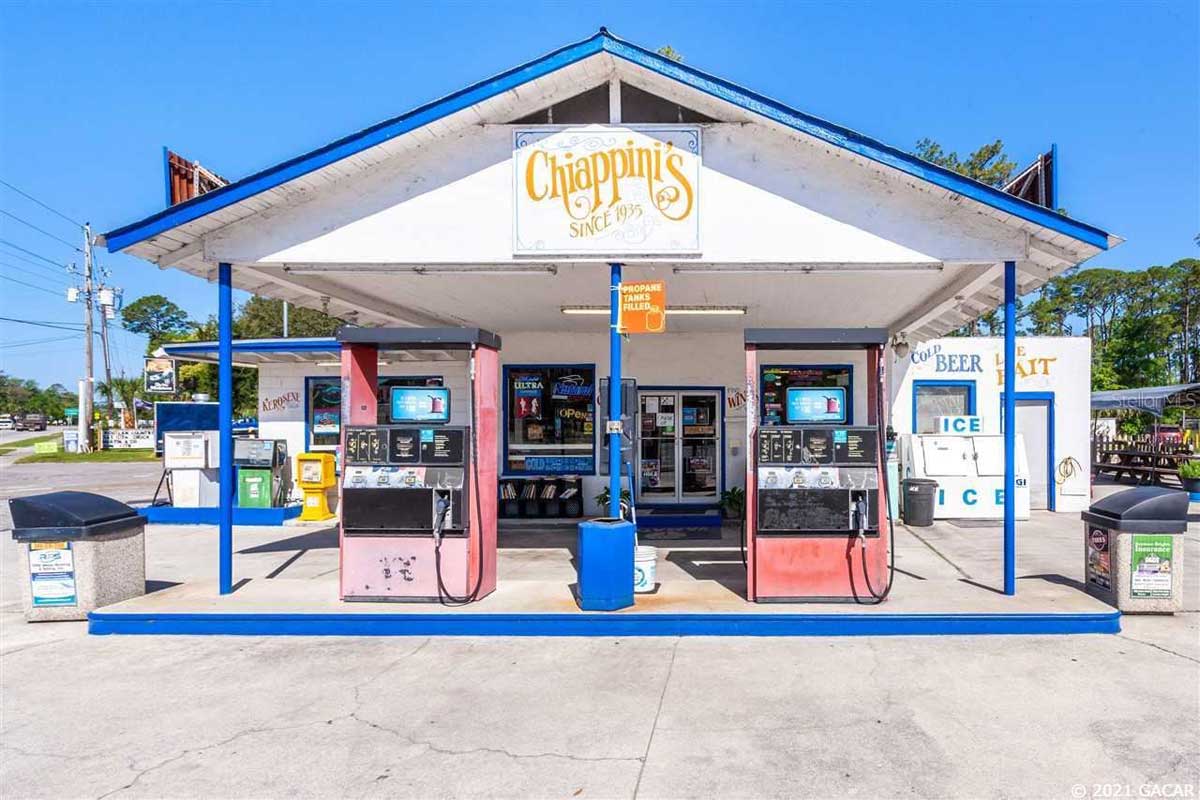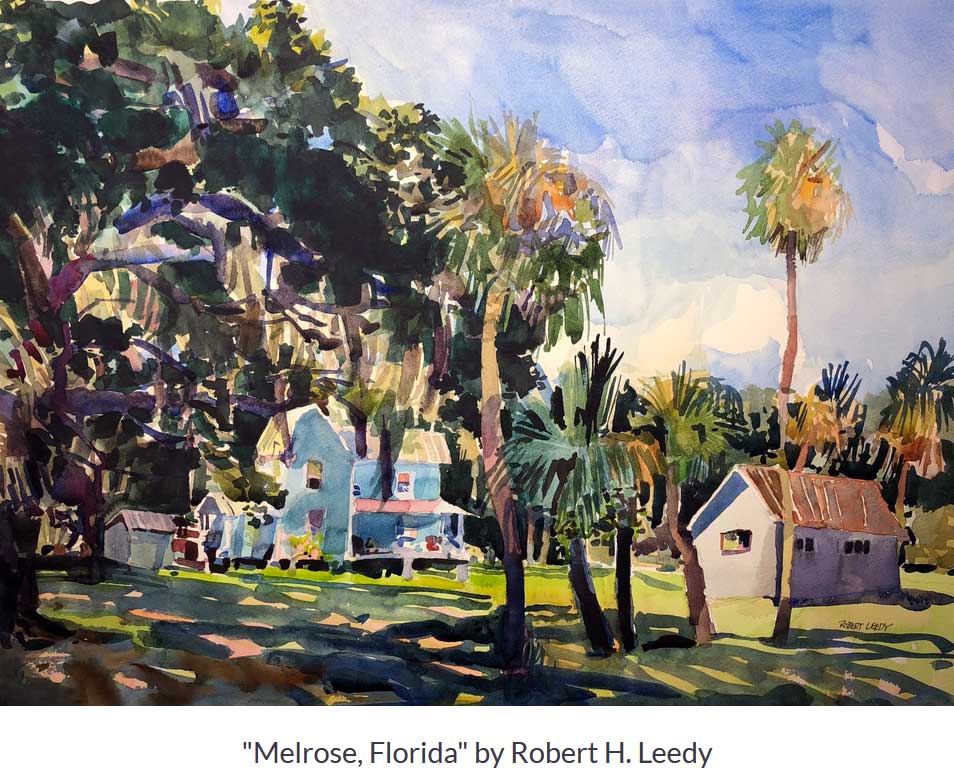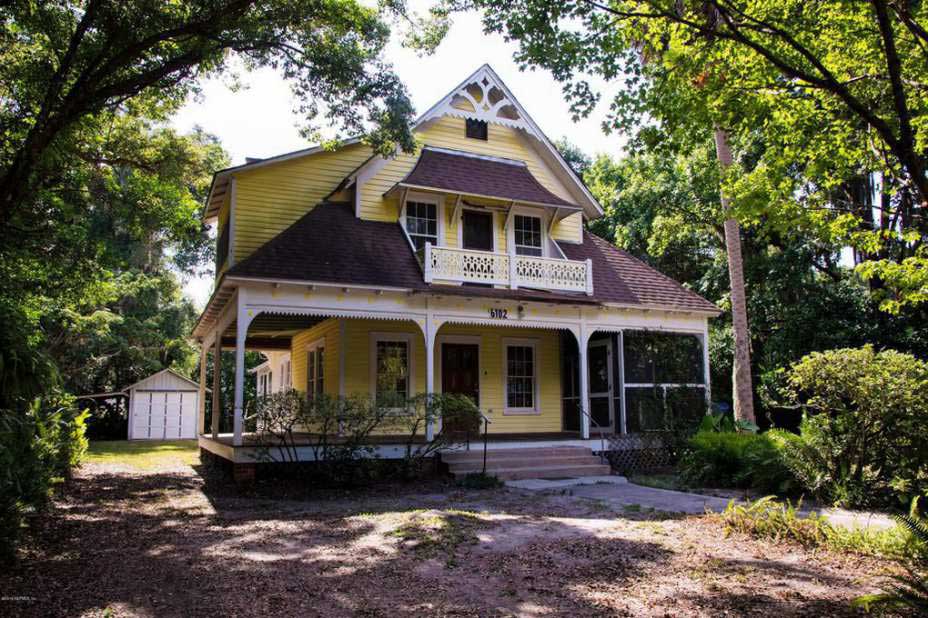About Melrose, Florida
Midway between the Atlantic Ocean and the Gulf of Mexico, at the junction of Alachua, Bradford, Clay, and Putnam Counties, this unique area in North Central Florida with its many beautiful lakes has been attracting visitors and residents since the 1870’s. Melrose is a small, charming community of approximately 3,500 residents. Come explore and learn more about this special corner of “Old Florida”.
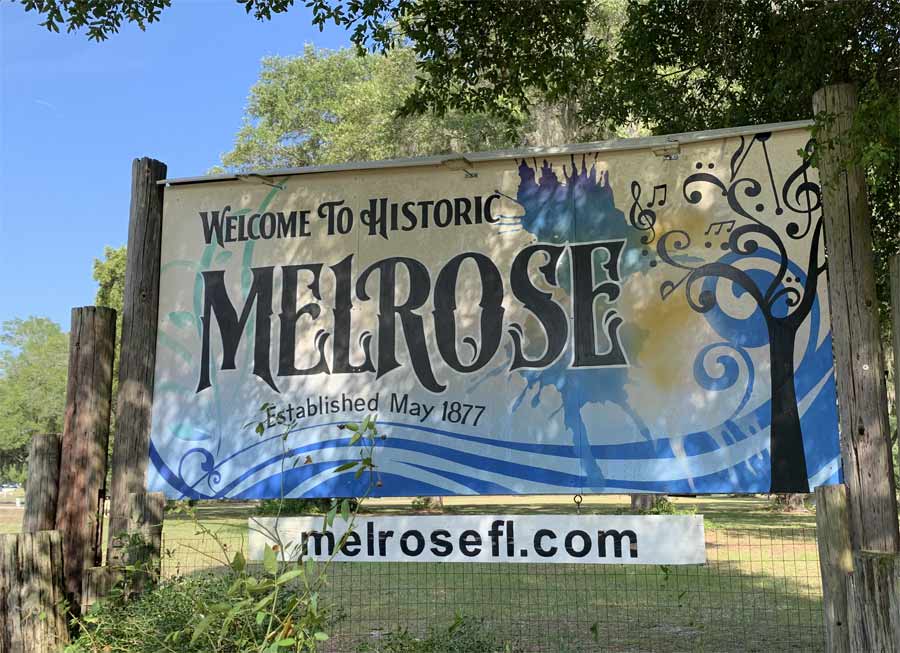
Two years after Florida became a U.S. Territory (1821), surveyors described the area of Melrose as “an uninhabited wilderness, except (for) a few Indian villages.” Their survey led to the historic Bellamy Road through our lakes region, linking St. Augustine and Tallahassee.
Still, the area remained isolated until 1877 when Melrose was platted and plans laid for a canal that would make it a waterport. The canal opened in 1881 and steamboats (the F.S. Lewis was the first) then began hauling passengers and freight across the lakes between Melrose Bay and the railroad in Waldo.
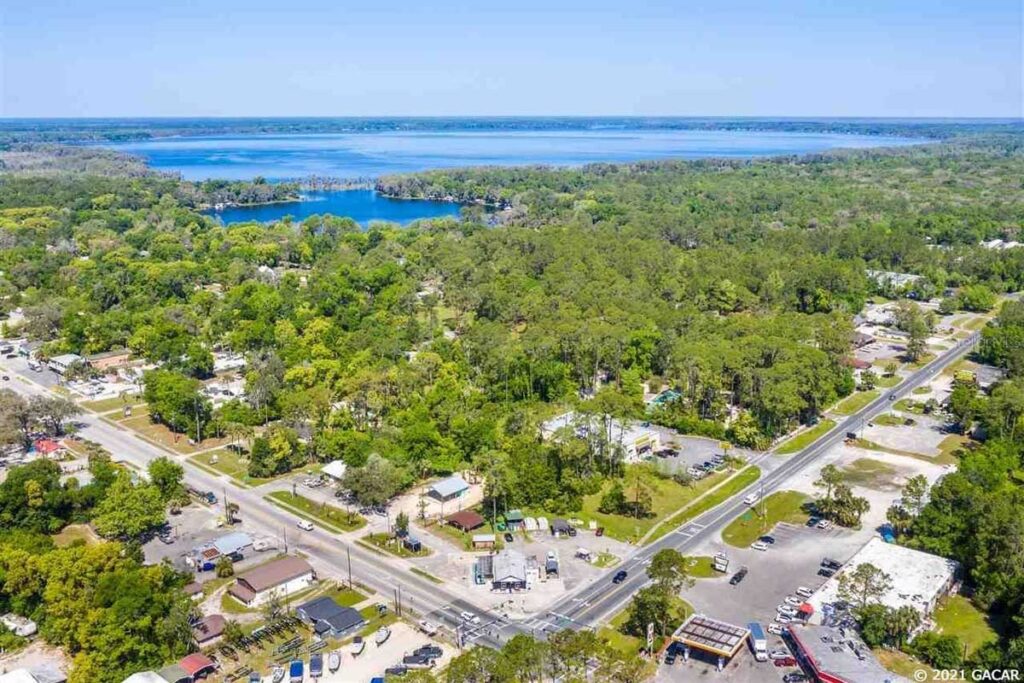
The newly accessible Melrose attracted not only settlers but winter visitors from the North, many of whom built fine homes. The local economy went from cotton farms to orange groves, hotels, and hospitality.
Watch this 2016 documentary “The Lake Santa Fe Story” about our area’s history and citizens.
Melrose’s “golden age”, during the 1890’s when many of its historic homes were built, largely ended about the turn of the century.
Although the Bellamy Road was built through this area in 1822, settlement was very slow until after 1842, with the conclusion of the Indian Wars. The original settlement was about a mile south of present day Melrose around a mill site on Etoniah Creek. It was called Banana as there were many banana trees growing along the creek banks. A post office was established prior to the Civil War. Mail was brought via boat up the St. Johns River to the Oklawaha and to Orange Springs. Then it was brought overland to Banana. This post office was closed during the Civil War and reopened later.
Sometime after the Civil War, families began to settle around Melrose Bay, an inlet off of Lake Santa Fe. Initially, the new community was called “Shake Rag”. This name came from the many horse races they used to hold. To start or end a race, they shook a rag, hence the name, “Shake Rag.” On May 10, 1877, a plat was recorded in Alachua County naming the community, “Melrose.” It has been speculated that the area women desired a more dignified name for their community and named it for Melrose, Scotland.
As settlers found Melrose, new ideas abounded. In the early 1880’s, a group formed to build a canal between Lake Santa Fe and Lake Alto to the west with another canal from Lake Alto to Waldo which was located on the railroad. This gave them transportation to northern markets for their crops. In turn, northerners found Melrose a delightful place to spend the winter. Soon, Melrose was a lively and bustling community. Until the great freeze of 1894 winter, this area had been the center of the citrus industry. After the freeze, this area practically stood still for many years. However, we are fortunate that many of the homes from Melrose’s heyday have survived. We have 72 structures contributing to our Historic District which is on the National Register.
Melrose’s churches have watched over and provided support to the community since its founding. The earliest churches of Melrose are Eliam Baptist, the Melrose United Methodist Church and Trinity Episcopal Church. The Methodist and Episcopal churches are in their original buildings.
Eliam Baptist Church was founded in 1859. The original site was at the Melrose Cemetery a short distance south of the business district on State Road 21.
Melrose United Methodist Church has the distinction of having the oldest church building in Melrose. The land was deeded to the church trustees in June, 1879 and the church built shortly afterwards.
Trinity Episcopal Church was organized by Bishop John Freeman Young and the building completed in 1886 by a local builder in the “Carpenter Gothic” style developed by the architect, Richard Upjohn. Architect Upjohn and Bishop Young became acquainted when Bishop Young had served as Assistant Rector of Trinity Church, New York City. Numerous churches have been built from the Upjohn plans.
Today, we have many denominations within 15 miles.
Melrose Bay Park
Our little park snuggled up to beautiful Melrose Bay offers peace and quiet just a couple blocks away from all the traffic along Bellamy Avenue (SR 26). Bring your children to play in the water at the sand beach, read a book on a park bench, or come to watch a local rowing team launch their long racing shell to practice on Lake Santa Fe beneath the fading rays of the afternoon sun.
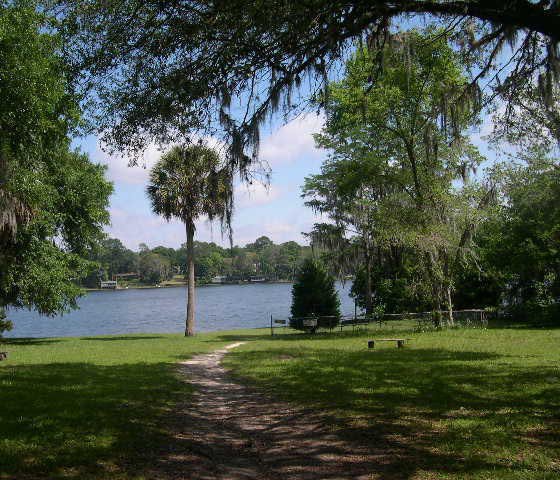
Just sitting here enjoying the view of the Bay and the birds in the trees around you telling their stories, all in the present day twenty-first century, it’s hard to imagine the history of this little spot. However, this small tract of land once played a very important role for the Melrose Community.
Although, the Bellamy Road had been built earlier and it’s just a couple of blocks away, in the “heyday” of Melrose during the 1880s through the early twentieth century, this was the site of the Melrose docks. Yes, in those times, Melrose was a port. And, travel by water was much easier than by land.
Melrose was connected to the railroad at Waldo via Lakes Santa Fe and Alto plus a couple of canals . The dockmaster, McKendree Lambdin also was the agent for the steamship line. His home, “Bayview” which also served as a hotel, was next door to the docks. As the Lakes and the steamboats provided their principal connection with the railroad, this spot of land played a key role in Melrose happening of the day.

After the boats no longer ran to Waldo, the land reverted to private use. In the 1940s, a Ms. Maggie Steinert owned this site and made it available to all as the Melrose “swimming hole.” In 1959, it was purchased by the Melrose Junior Women’s Club who deeded it in 1983 to the Melrose Business Association, Inc. which later was renamed the Melrose Business and Community Association, Inc. The MBCA continues to own and maintain the park.
We invite you to come explore not just our park, but our entire community and learn more about this special corner of “Old Florida.”
The Melrose Business and Community Association, Inc. formed a support group, Friends of Melrose Bay Park. If you wish to assist us, the park is maintained entirely by volunteers. We welcome all types of assistance either through actual time spent maintaining the park or by donations to assist with the necessary expenditures.
Amenities
Melrose is fortunate to have many facilities frequently found only in larger communities such as a cemetery, parks, public library, and a community water system.
In no particular order, area facilities include one traffic light, a post office, a library, a water system, a grocery store, an elementary school, ten churches, two beauty shops, a barber shop, a book store, a funeral home, a convenience store, a hardware store, two real estate firms, five restaurants, and a sports bar. One can eat breakfast, lunch or dinner in our town without messing up their kitchen. You can choose from pizza, chicken, seafood, steaks or good old home-style cooking. Also, we have a physical therapist, an opthamologist, an optician, a dentist, two veterinarians, a bank, a few lawyers, two day care facilities for children, two gas stations, three art galleries, a brand new Senior Community Center, the Dauer Historic Museum, and a weekly Farmers’ Market in Heritage Park. In addition to these, we have 72 contributing structures in our Historic District , plus many other beautiful homes with very attractive gardens, the Baden-Powell Boy Scout Reservation, and the Ordway Preserve . This area produces grapes, pecans, blueberries, watermelons, vegetables, and the Chinese Honey, a citrus fruit similar to a tangerine that is absolutely delicious. In addition to this, Keystone Heights is only seven miles up-the-road with additional facilities.
For places to stay, check out our list of inns, rooms, and rentals in the Melrose area at Inn Crowd, or browse accommodations in Gainesville, Ocala, or Palatka.
The only public swimming area on Lake Santa Fe, Melrose Bay Park is owned by the Melrose Business and Community Association, Inc. (MBCA) and is supported and managed entirely by volunteers. Lake Santa Fe is excellent for fishing, swimming, water skiing, etc. There are a couple of public boat ramps with playgrounds and picnic areas in close proximity to town. We are located about 20 miles east of Gainesville, home of the University of Florida. Our main street, Bellamy Avenue (State Road 26) is one of the major Gainesville-to-the-Atlantic beaches routes. This creates a lot of traffic for our 1 little traffic light to manage, but it seems to be doing the job.
The Melrose Youth Sports Association, assisted by state grants, has built a very nice sports complex for this area located adjacent to the Melrose School. This includes soccer fields, baseball fields, a basketball court, tennis and volleyball courts, a walking path, and a support building with restrooms. Our area children are very fortunate to have this type of local facilities.
In 1996, Putnam County finished a new building at Melrose Elementary School which accomodates 16 classrooms and a computer lab. Originally, the school was the Melrose High School from 1925 until 1968, at which time it was converted to an elementary school.
This section of Florida is dotted with lakes, large and small. Lake Santa Fe is one of the larger lakes in the state. In addition to Lake Santa Fe, we have Lakes Swan, Rosa, Serena, Ashley, Winnot, and Melrose in the immediate area plus numerous smaller lakes and ponds. This area is really convenient to both coasts – Atlantic and Gulf. We also enjoy the St. John’s River which flows north through Palatka and Green Cove Springs on its way to Jacksonville and the Atlantic Ocean.
Melrose used to be known as a retirement area, but in recent years it has become a bedroom community for the larger towns around, such as Gainesville, Ocala, Palatka, and Starke. We even have commuters to Jacksonville and Orange Park which are about 50 miles North of here.
Bellamy Road – Florida’s First Federal Highway
After Florida became a U. S. Territory, the First and Second Legislative Council was held in Pensacola and St. Augustine, respectively, as these were the two centers of population. It was determined that an overland route was needed to connect the two areas. Authorized by the Eighteenth Congress, $20,000 was appropriated for the survey and opening of a public road from Pensacola to St. Augustine.
The Congressional Act reads:
Be it enacted that the President of the United States is hereby authorized to cause to be opened, in the Territory of Florida, a public road from Pensacola to St. Augustine, commencing at Deer Point, on the Bay of Pensacola, and pursuing the old Indian Trail to the Cow Ford on the Choctawatchy River; thence direct to the Natural Bridge on the Econfinan River; thence to the Ochese Bluff on the Apalachicola River; thence in the most direct practicable to the site of Fort St. Louis; thence as nearly as practicable, on the old Spanish road to St. Augustine crossing the St. Johns River at Picolata; which road shall be plainly and distinctly marked and shall be the width of twenty-five feet.
Captain Daniel E. Burch of the U.S. Army was appointed to supervise the surveying and construction of this new Federal Highway in the Florida Territory. To survey the route, Burch with a detachment marched from Pensacola beginning Oct. 22, 1823 and reached St. Augustine Nov. 25, 1823, a distance of 445 miles.
Governor William F. Du Val recommended John Bellamy as the best equipped to build the eastern part of the road. Bellamy’s contract was to construct the road from the Ochlockonee River to the St. Johns River. He began construction on December 21, 1824. The road, Florida’s first Federal Highway, was completed in 1826.
The route through our area came across the Natural Bridge over the Santa Fe River in Columbia County, a bit SW of O’Leno State Park. It came through Newnansville (near current day Alachua), Fairbanks, to Melrose, then through Clay County to the St. Johns near Bayard, across to Picolata and on to St. Augustine.
When Melrose was plotted in 1877, Bellamy Avenue became the major East – West thoroughfare. Today, it is known as State Road 26. In the mid-1960s, the Department of Transportation upgraded the highway, installing sidewalks, curbing and gutters. In the process, many old trees were removed. To improve the appearance of the Bellamy Road through Melrose , the Melrose Business and Community Association received a DOT grant and planted additional trees and shrubbery with assistance from Alachua and Putnam Counties.


